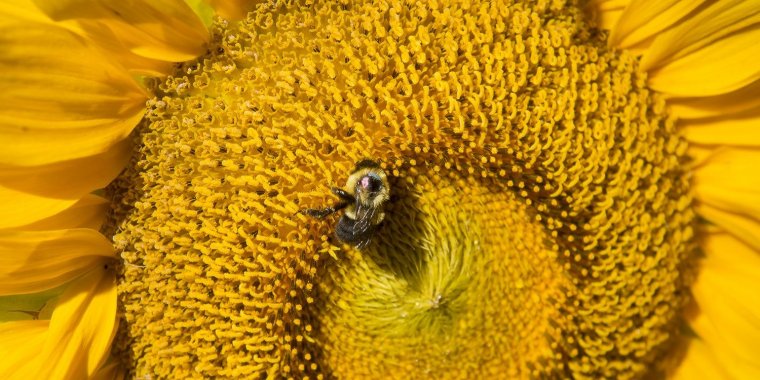| News / Science News |
Bumblebee disease, reproduction shaped by flowering strip plants
Flowering strips -- pollinator-friendly rows of plants that increase foraging habitat for bees -- can help offset pollinator decline but may also bring risks of higher pathogen infection rates for pollinators foraging in those strips.

Flowering strip plants like sunflowers can help increase bee reproduction. Photo: Ben Barnhart
Researchers at North Carolina State University and the University of Massachusetts Amherst show that flowering strip plants generally benefit bee colony reproduction by adding floral resources for common eastern bumblebees (Bombus impatiens).
The results come with a tradeoff, however, as bumblebees exposed to certain plants showed higher rates of infection by a bee pathogen on flowers, Crithidia bombi, associated with reduced foraging abilities as well as mortality in food-compromised bees.
The study showed that certain "high-infection" plants doubled C. bombi infection intensity when compared with "low-infection" plant species. And bees feeding mostly on canola plants -- a major bee foraging plant and important U.S. crop -- showed infection levels between those caused by high- and low-infection plants.
Nonetheless, all bee colonies that foraged on flowering strips -- both low-infection and high-infection types -- showed increases in reproduction relative to bees that had access only to canola.
"We wanted to know the effects of flowering strip plant species on the health and reproduction of bumblebees," said Rebecca Irwin, an ecologist at NC State. "Flowering strips are becoming more common as people look for ways to mitigate pollinator declines."
Researchers placed bees in tents with the crop plants and either high-infection flowering strips, low-infection flowering strips or no flowering strips. The bees were all infected with the same amount of pathogen and then allowed to forage to determine whether the plants could increase or decrease infection.
The flowering-strip tradeoff -- more bee reproduction but higher pathogen infection rates -- may be acceptable, said the researchers. (National Science Foundation)
YOU MAY ALSO LIKE





